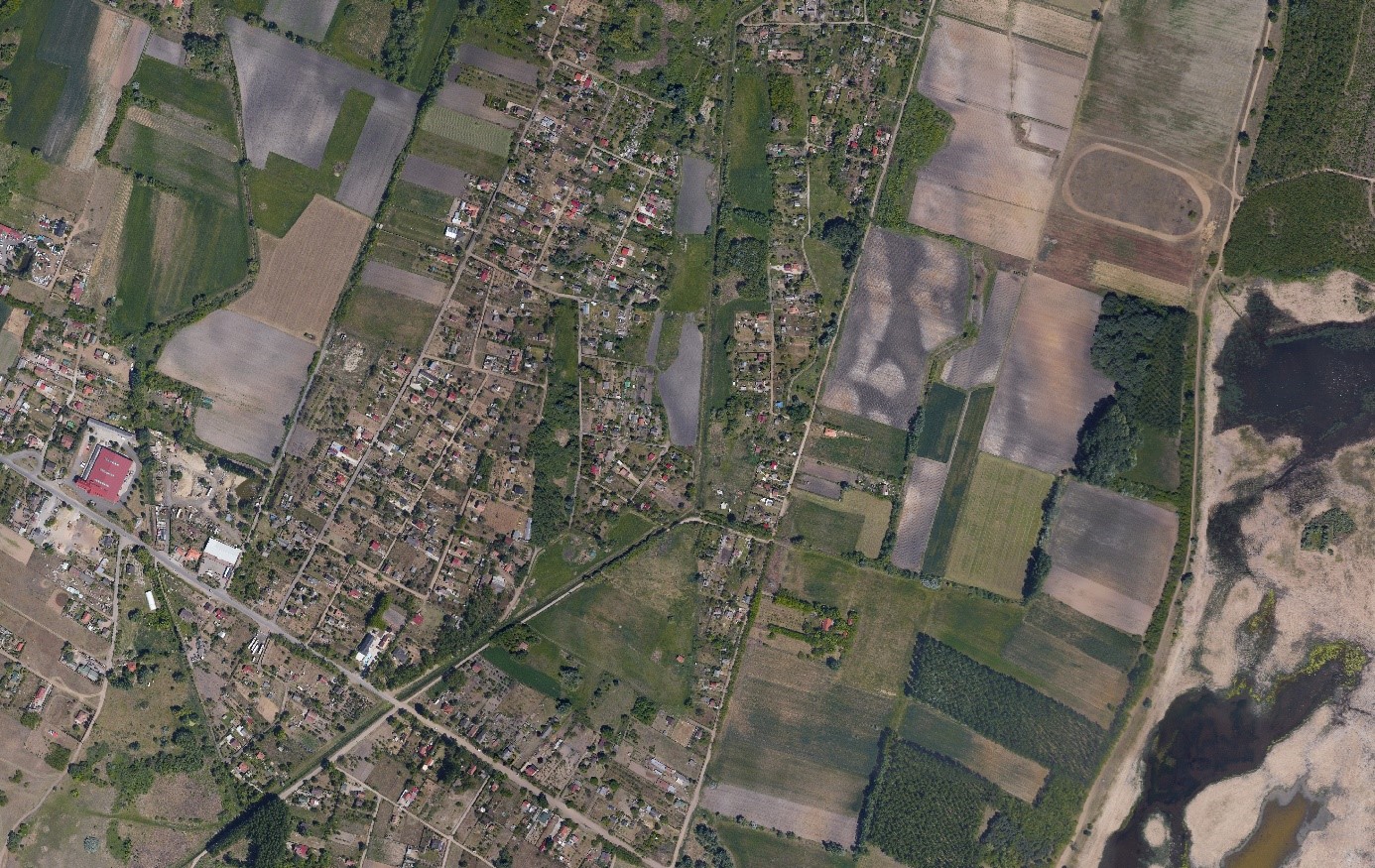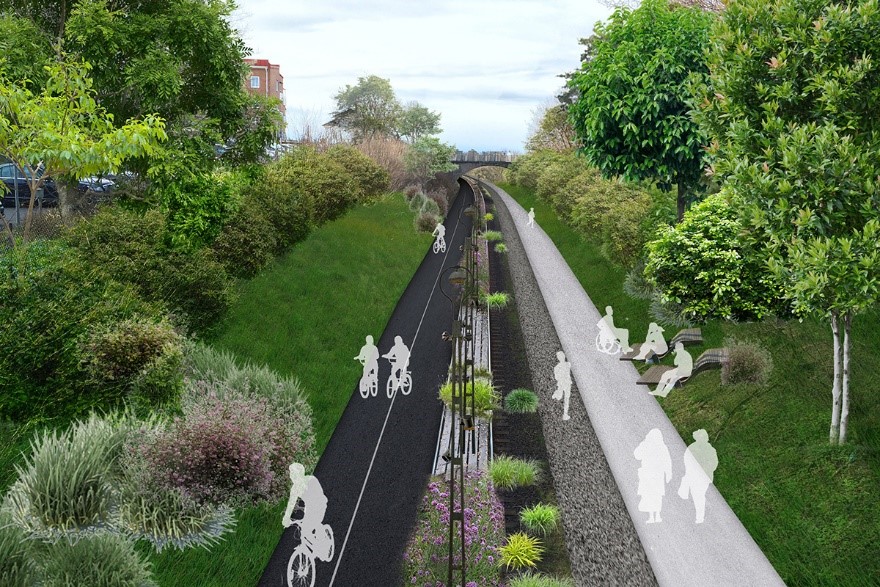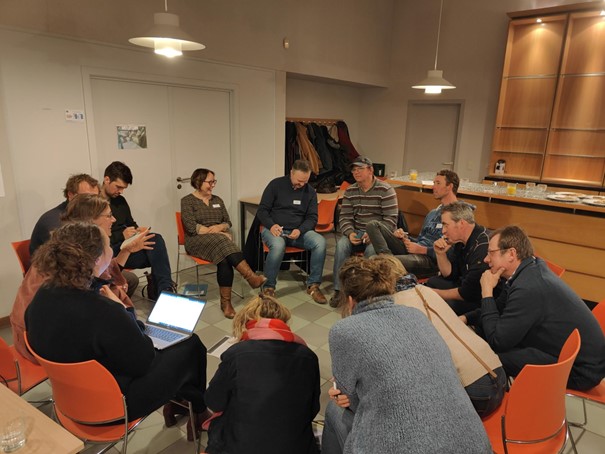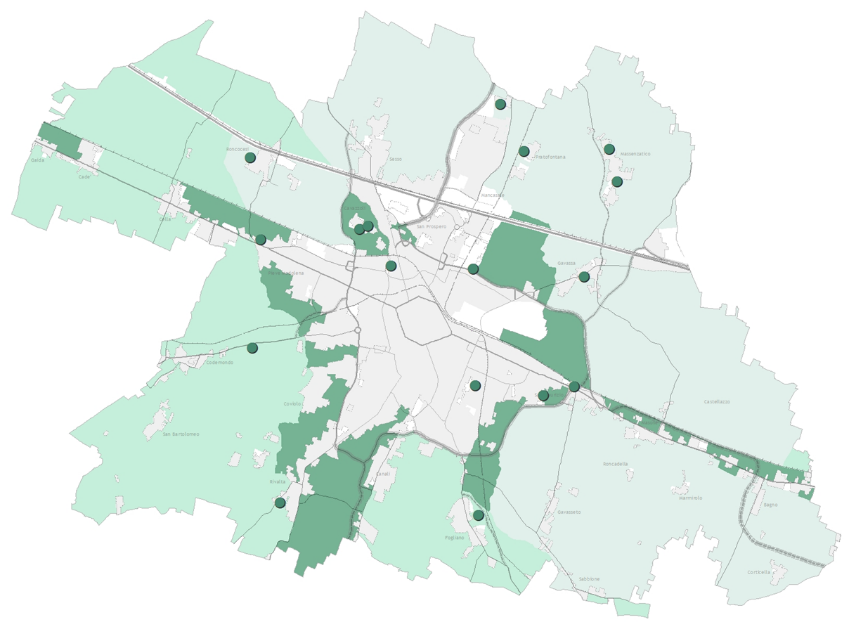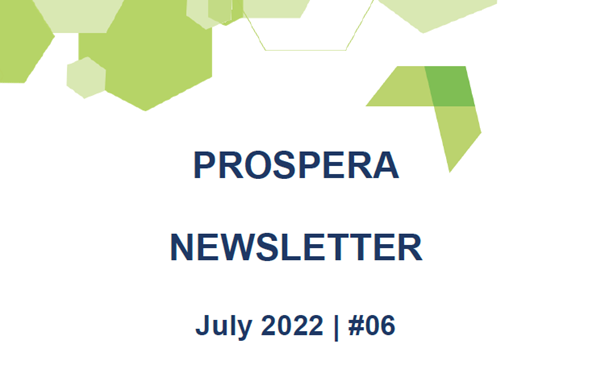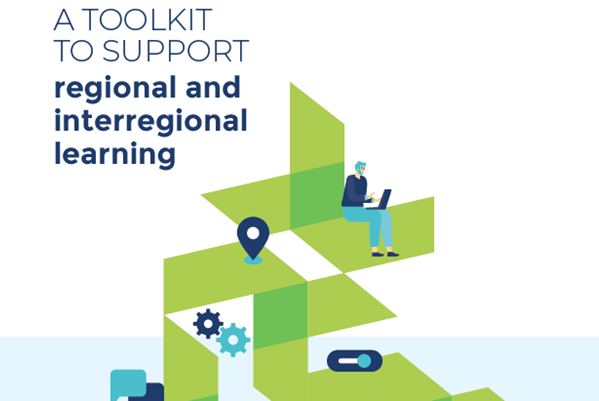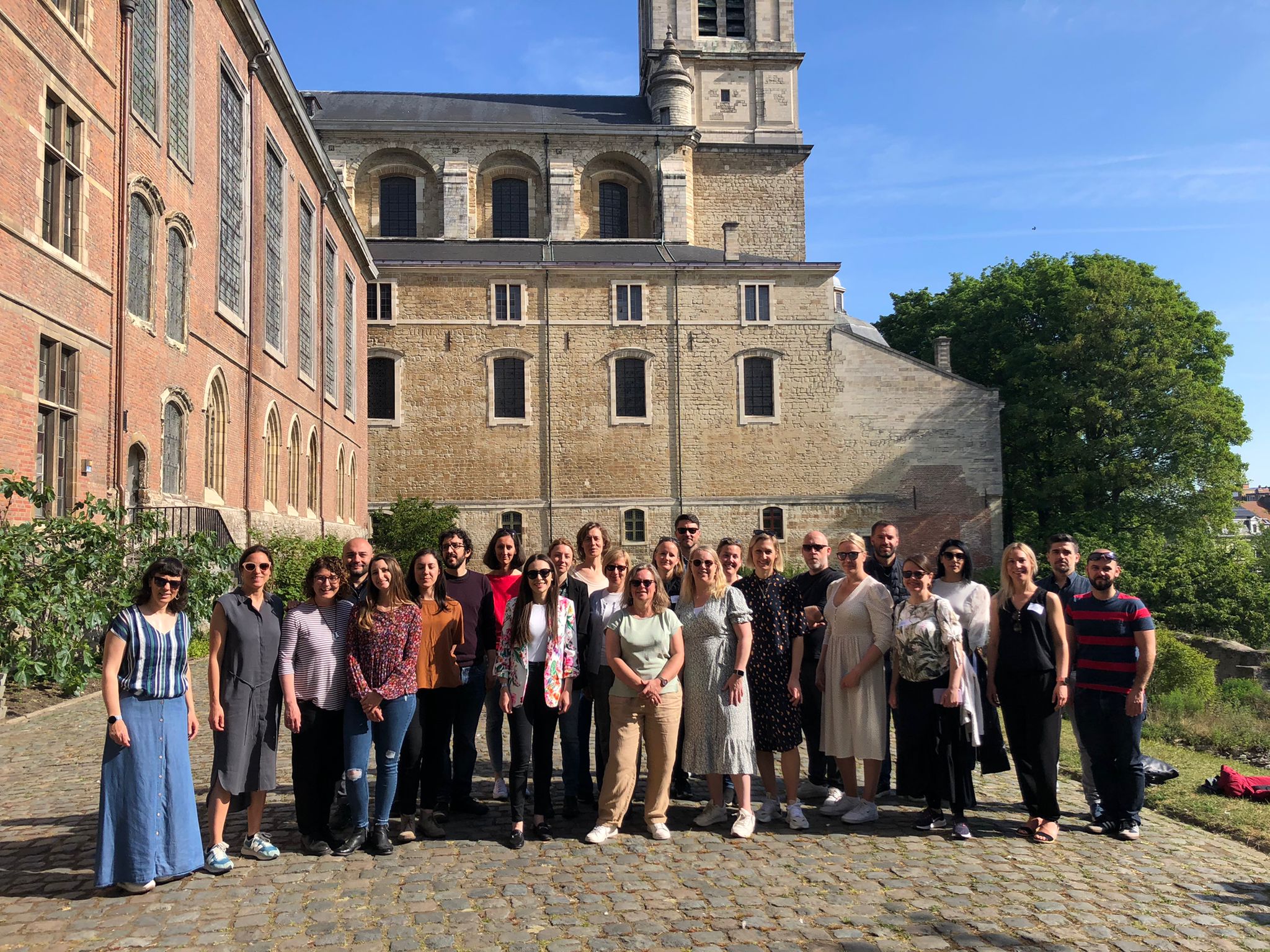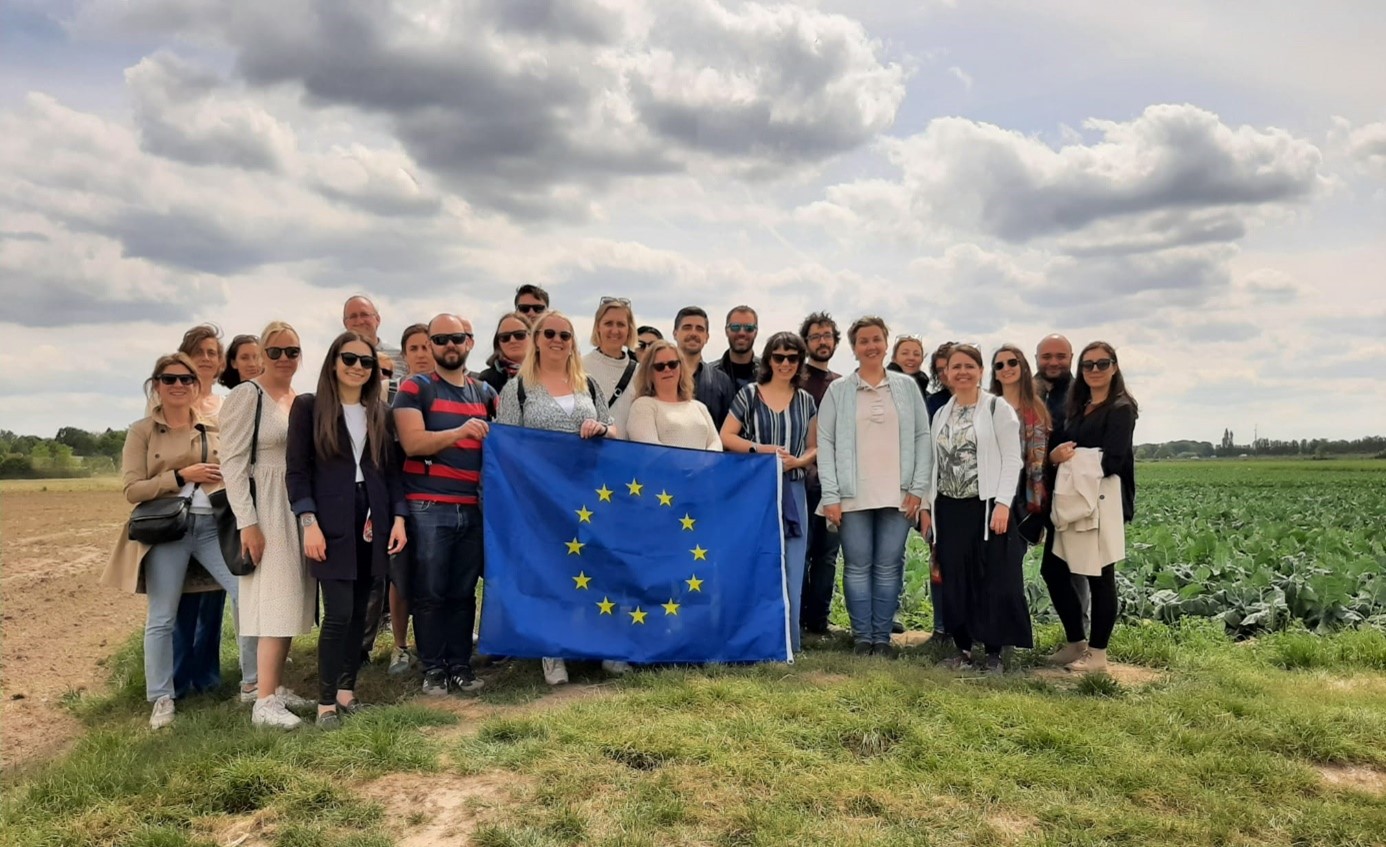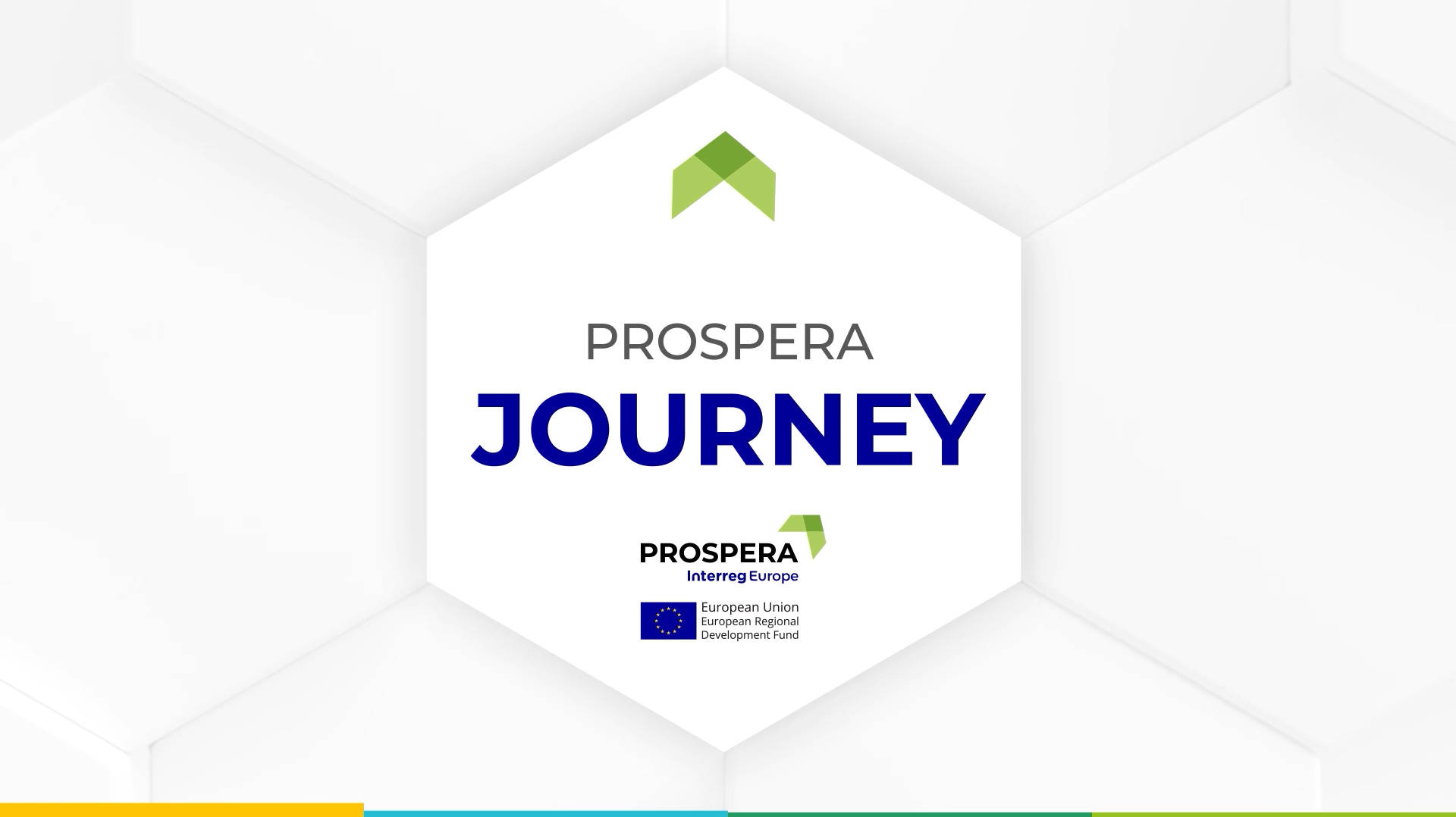Here you can watch the video-interview.
Reggio Emilia is implementing many policies on the topics of the PROSPERA project, integrated policies both at the level of the Municipality and with the stakeholders of the territory with business and agricultural associations, the University, professional associations, schools, etc. to strengthen the protection and promotion of natural heritage in peri-urban areas, as desired by the PROSPERA project. Peri-urban areas, understood as hinge areas between the consolidated city and rural areas, have acquired an even more strategic value over the years in our city they are both natural spaces of ecological compensation but also experimental spaces in which to try to build a different idea of the city, of development and relationship.
Reggio Emilia’s good practices demonstrate how peri-urban areas are real strategic areas.
On the one hand, the enhancement of natural heritage, such as parks, green areas, spaces between residential and rural areas, greenways, and the productive fabric, therefore the 0 km farms linked to local supply chains which can be strategic assets for the development of the surrounding areas and of the entire "green" belt of the city.
On the other hand, the possibility of experimenting with new partnerships between the Municipality and private actors in the area, therefore companies, civil society, research centers, to set the design of innovative practices as a common goal such as the Edible Park project, which I will talk about shortly, or the urban forestry action that is carried out by the Municipality together with local businesses.
In this sense, we believe that Reggio Emilia's good practices can offer other cities some practical examples of local policies capable of integrating themes and actions in an integrated vision of the territory.
In particular, the projects we are working on are: the urban planning and regeneration strategy which is the territory management strategy within which many different good practices are inserted. The Strategy starts from the idea of converting over 136 hectares of potentially building areas from the old regulatory plans into agricultural areas also thanks to the redevelopment of farms in the area. This is also possible thanks to the new General Urban Plan, which is being drafted and that sets very important objectives in terms of environmental sustainability. Then there is the Urban Forestry and Biodiversity Strategy which aims to plant more than 50,000 trees by 2024 involving citizens, businesses, third sector actors. This is precisely to encourage the fight against climate change, atmospheric pollution and protect the biodiversity of our territory.
For a long time, our city has been working on the concept of Greenways, which are green paths that embrace the consolidated city and are proposed as real connections among hamlets and peri-urban areas through the use of rural paths, rivers, streams, our city is characterized by 3 main streams that embrace the urbanized area, so these paths also run alongside these waterways, the carriage roads of the farms and other existing paths and tracks are used.
The interesting thing is that these paths are developed in synergy with local subjects, with specific agreements carried out between groups of citizens, volunteers, the Italian Alpine Club, the Central Emilia Reclamation Consortium and the Central Emilia Parks Authority, therefore trying to keep together all those who work for the environmental and natural well-being of our territory.
Another example, that I consider very virtuous, is a project that the Municipality has carried out in recent years, is that of the Edible Park, which offers the experience of a multifunctional agricultural production model, promoted by the private sector together with the public and allows to provide local neighbourhood consumers with quality agricultural products, promoting awareness and education activities, practices of social inclusion and animation of those who live in this neighbourhood that surrounds this park which is cultivated in synergy with the residents.
All these practices that we have presented are the first attempts to respond to the growing and urgent needs of the city, not only in environmental terms but also in economic and social terms, even more so given the historical period in which we are linked to the pandemics.
In this period, we realized how much the citizens' "hunger for greenery" is, the need to create a culture of green spaces and sustainability, to enhance the green surroundings and green connections as an opportunity for relationships and collaboration among citizens in the way they can experience the city they live in.
With these practices, our city wants to position itself at the centre of the European debate on the new Green Deal, confirming its commitment to implement the strategies related to green Europe such as the Food Strategy, the Biodiversity Strategy and the protection of natural resources.


